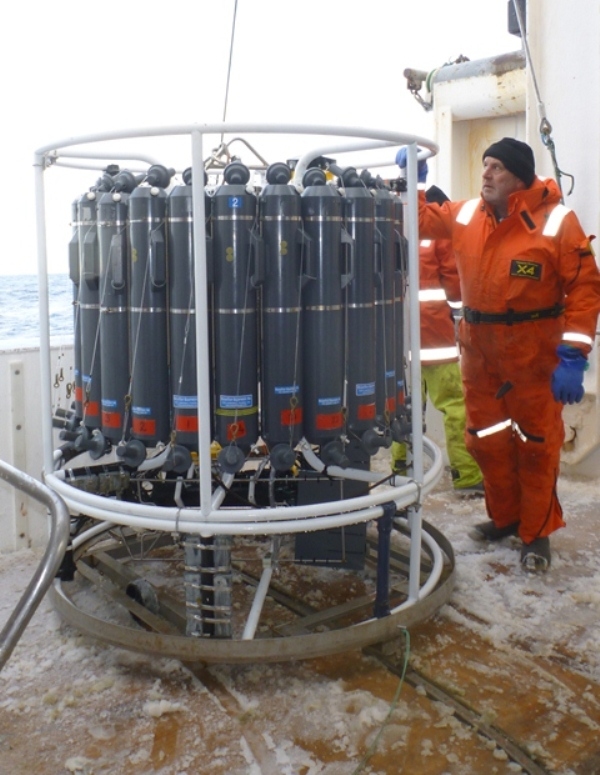The Southern Ocean is under-sampled. Data collected continuously from this voyage will fill a critical knowledge gap, helping scientists to produce better global climate and oceanographic models to ultimately improve weather forecasting and help to understand the effects of climate change on the Southern Ocean.
The oceanographic programme will comprise four components: the collection of underway data in transit; focused upper water column sampling with an underway CTD; the deployment of Argo floats; and the mooring measurements in Terra Nova Bay. All these components will contribute to global datasets that are used for a variety of purposes.
The atmospheric programme will focus on improving knowledge of clouds and aerosol-cloud interaction processes over the Southern Ocean, to guide future climate prediction.
Sampling with an underway CTD
An underway CTD (Conductivity, Temperature and Depth profiler) samples the upper part of the water column using a freefalling instrument, which is then auto-recovered. It can be deployed while the vessel is in transit, allowing additional oceanographic information to be acquired without the loss of time. The instrument will be deployed while crossing major fronts in the Southern Ocean, and other oceanographic features of interest.
Argo floats
Argo floats are autonomous instruments that collect oceanographic information and periodically transmit the data via satellite. This voyage will contribute to international efforts to maintain global coverage of the oceans by deploying 12 Argo floats in the Southern Ocean while in transit to the Ross Sea.
The international Argo programme aims to deploy an array of 3000 to 4000 profiling floats in the world's oceans to provide real-time observations of the temperature and salinity structure in the upper layer of the global waters. The floats will typically drift at a depth of 1000-2000m, rising to the surface every ten days measuring temperature and salinity profiles as they go. After relaying its data and location via satellite, the float sinks again to begin another cycle.
Read more about NIWA's involvement in the Argo programme
Atmospheric chemistry sampling
A variety of on-board techniques are planned for atmospheric sampling, These include continuous sampling of air pumped to atmospheric monitoring equipment, collection of discrete gas and aerosol samples into tanks or on filters, and low-power lidar 'sounding' of the atmosphere.
Flask samples of air will be analysed for the radiocarbon content of carbon dioxide above the Southern Ocean, in order to improve knowledge of processes that drive carbon dioxide exchange between the air and the ocean. Samples of ice nuclei will be collected via filter for offline analyses. Continuous underway measurements of atmospheric aerosols will be made using a condensation particle counter (CPC), sampling air from an inlet above the crow's nest.
Read about atmospheric gas analysis
Read about global climate and ocean models
Related information
Read about NIWA's Atmosphere research and services

